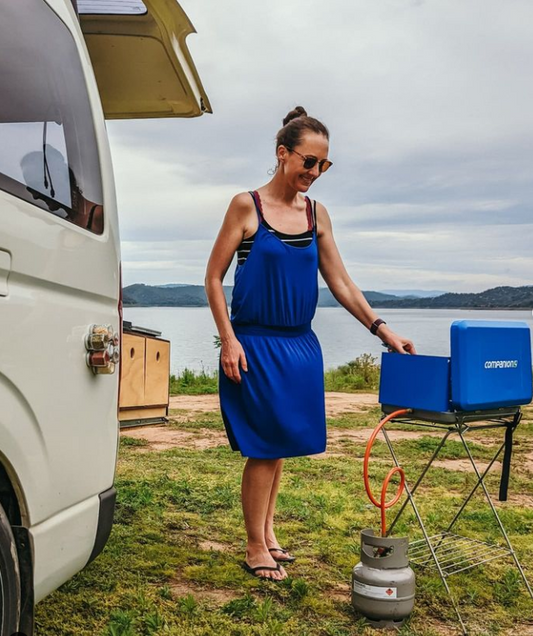
The most economical and efficient way to get your hands on fresh herbs is by growing them yourself. Growing herbs is a simple process that can provide you with numerous health benefits and endless opportunities for adding flavor to your favorite dishes. With just a few basic tools, some soil and seeds, you can learn how to grow herbs in no time.
There is a lot to learn when it comes to herbs, but when it comes to growing herbs, they are relatively easy to maintain, requiring little more than regular watering and occasional trimming. You can choose from a variety of different varieties of herbs depending on the climate in which you live, as well as the seasonality of when they are best grown. To get started, it's important to prepare an area with plenty of sunlight exposure or use containers indoors or outdoors. After selecting the right type of herb plant for your location, it's time to start planting!
Types of Herbs to Grow
Herbs are a great addition to any garden, providing flavor, fragrance and beauty. Growing herbs is simple and can be done both indoors and outdoors. While there are countless herbs that you can grow in your garden, here are three of some of the most popular types of herbs that you may want to consider planting.
- Basil - One of the most common herbs to grow, which has a sweet anise-like aroma and flavor. Basil pairs well with tomatoes and other vegetables in salads or sauces.
- Parsley is another versatile herb that adds bright flavor to many dishes; it’s easy to grow from seed and is often used as garnish.
- Sage has a pungent sage scent with hints of lemon; when baked into bread it gives off an amazing fragrance!
Container Gardening
Container gardening is an easy way to grow herbs in any size space. Whether you’re tight on space or just want to add a little green to your home, container gardening can bring life and color to your living area. Growing herbs in containers also allows for more control over the soil, water and sunlight that plants need for optimal growth. Here are some tips for growing herbs in containers so you can enjoy the beauty of a flourishing herb garden with minimal effort.
Tip 1 - Choosing Containers & Soil
When selecting containers, make sure that each container has plenty of drainage holes at the bottom so that water does not get trapped in the soil and cause root rot. It’s also important to choose pots that are large enough; while some herbs can thrive in small containers, most need more room as they grow larger over time.
Tip 2 - Use Your Space
One benefit is that container gardening requires minimal space, allowing it to be practiced almost anywhere – from patios to rooftops. Additionally, containers can easily be moved and rearranged according to need or preference. Containers come in all shapes and sizes ranging from traditional terra cotta pots to raised bed gardens making them ideal for any space or budget.
Tip 3 - Fertilizing & Watering
Fertilizing can help maximize growth potential for herbs; use a balanced liquid fertilizer every two weeks during active growth periods. Always be mindful of quantity when fertilizing as too much can cause salt buildup in the soil, leading to stunted or even dead plant growth. Watering and fertilizing correctly are essential components of successful herb growth; get familiar with your individual plants’ needs so that you can ensure they have all they need throughout their lifecycle!
Planting & Care Tips
Planting and caring for herbs can seem intimidating, but with the right tips, anyone can grow a healthy garden full of delicious flavors. Growing herbs is an easy and rewarding way to get into gardening. Whether you want to add flavor to your cooking or some beautiful greenery to your yard, herbs are a great choice. Here are some essential planting and care tips that will help you create the perfect herb garden!
- First off, when picking out your spot for planting, it's important to make sure that the soil drains well and gets plenty of sunlight throughout the day.
- Mix in organic matter such as compost or manure before planting the herbs in order to give them plenty of nutrients for growth.
- Every herb has different needs when it comes to water so be sure to check how much each individual plant requires before getting started.
Common Pests & Diseases
Growing herbs is a great way to bring flavor to your cooking and beauty to your garden, but pests and diseases can limit their growth. Common pest problems that affect herbs include aphids, mites, slugs, snails and whiteflies. Diseases are caused by bacteria, fungi and viruses that can spread through the garden if the proper precautions aren't taken. To prevent these issues from affecting your plants it's important to practice good gardening habits like planting in well drained soil and making sure the area gets plenty of sun. It's also important to regularly inspect your plants for signs of disease or pests such as discoloration or holes in leaves. If you spot any symptoms then take action quickly by using an organic pesticide or fungicide before the problem becomes too severe. With consistent care and protection you can help ensure that your herbs will grow healthy and strong!
Harvesting Herbs
Harvesting herbs is an important part of growing a successful herb garden. Knowing when and how to harvest your herbs can make all the difference in the flavor and texture of the final product. Growing herbs requires patience, but harvesting them doesn’t have to be difficult! With the right tips and tricks, you’ll soon be enjoying delicious homemade meals with freshly-harvested herbs from your own backyard.
When it comes to harvesting herbs, timing is key. While some like rosemary need to be harvested when their flavor is strongest, others like basil should only be picked when they are still young as older leaves tend to taste bitter or become woody.
Enjoy the Rewards Of Your Efforts
For those looking to enjoy the reward of growing herbs, there are a few key steps. There is more to know about herbs, but growing herbs can provide an abundance of fresh, flavorful ingredients for cooking and medicinal remedies. By following the tips outlined in this article on how to grow herbs, you can reap the benefits of harvesting these flavorful plants right from your own backyard.
The most important tip to remember when growing herbs is that they thrive best in well-draining soil. Additionally, keep an eye out for pests and diseases that may harm your plants and address them as soon as possible. When it comes time to harvest, do so in the morning hours when the oils are at their peak concentration. This will ensure maximum flavor and fragrance with each bite you take!



